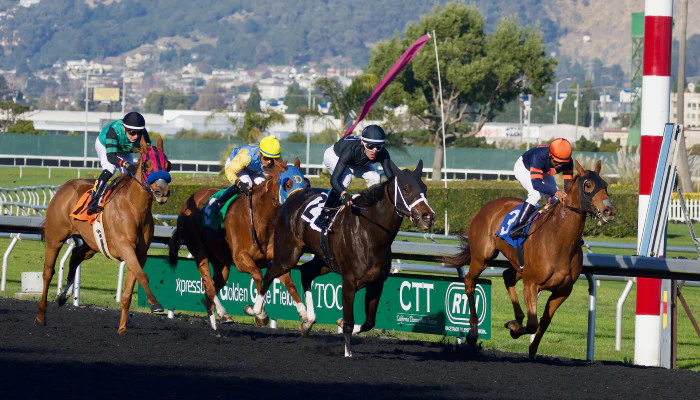Horse racing forms are typically sold at live horse racing tracks and off-track betting facilities. They list a comprehensive history of horse race cards at each track. The live tracks only feature the race card of the day. The off-track betting facility will supplement its guide with all the horse races in that day’s schedule.
The horse racing form is an invaluable tool for determining the probability of each horse winning that race. The form can be difficult to comprehend for a beginner, but it is laid out in different sections of the race to make it simple to follow along.
The Racing Form’s Header
The header on the horse racing form has all the general information about the horse race. You can determine the racetrack, the race card number and general information about the race. The general information includes the distance, the surface of the track and the claiming price.
The racing form’s header is a handy guide that points you in the right section with the number and race on the horse track’s card.
Find the Horse Race Conditions
The racing form makes it easy to find the track’s conditions for the race. Underneath the track’s name you can find the length of the race, the prize purse and the horses that qualify for this event. You can also determine the class specifications with the race conditions.
Alpha-numeric codes on the right of the track’s name are used to convey most of the information included in the race description. These codes make it easy to quickly scan the information for the particular race.
Review the Individual Horse’s Information
There are three columns of data about each horse. The first column is the race, the second column is the pedigree and the third column is the average performance history. By reviewing the individual horse’s information, you can determine the pattern in all their recent workouts.
You can also determine the morning line odds. These are standing odds prior to this race. For example, the morning line odds are 3-to-1. If you successfully bet a horse to win, you would get three dollars for that wager.
Next for the jockey’s name, you can find his statistics including the total starts for the meet along with first, second or third place finishes. The jockey’s final number is a win percentage. Also included is the jockey’s races, first place finishes and a winning percentage for the whole year.
Study a horse’s Beyer Speed Figure, especially with recent races. This Beyer figure is followed by the horse’s position at post, first call, second call, third call, stretch call and finish.
Review the Horse’s Trainer and Track Conditions
A good trainer can get the maximum effort out of the horse. Study the trainer and tailor it for the horse’s ability to run the race. Review the track conditions to find out the conditions. The racing form should tell you if the horse track is fast or sloppy. Also, consider the track’s conditions in the horse’s recent appearances at all horse tracks.
What Is a Win Bet in Horse Racing?
Examine the Horse Racing Expert’s Advice
Make sure to take note of the horse racing expert’s advice. These experts are especially equipped to note a horse’s important pedigree data, workout patterns and insights on previous races.
Read our top 5 tips for betting on horse racing next.
 ES
ES 














